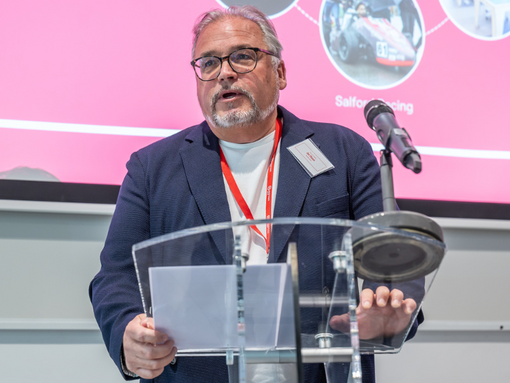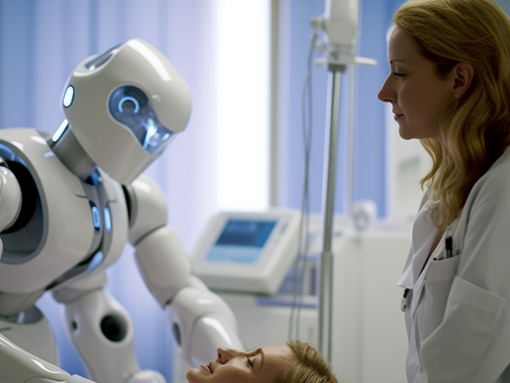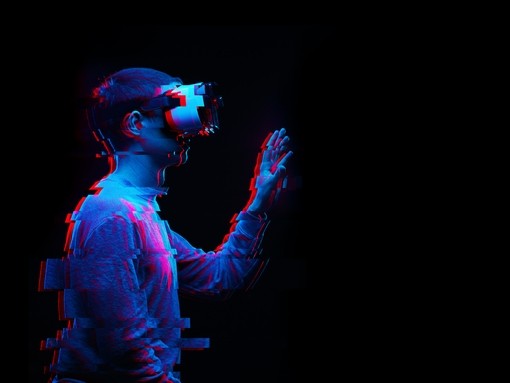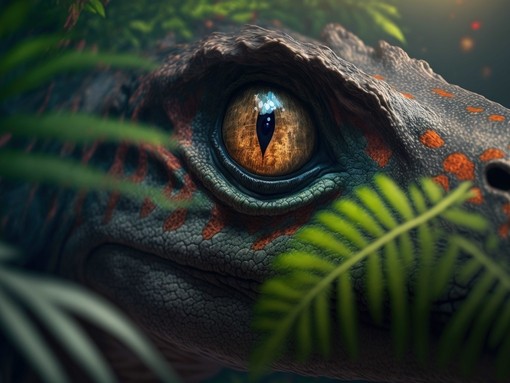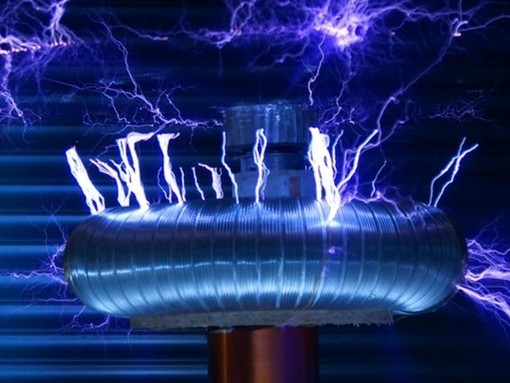
People of Digital: Machine learning, Bump and thinking wider at Tharsus
Contents
- What is Tharsus and what does your Digital Technology Director position entail?
- What attracted you to Tharsus?
- A good example of your collaborative culture in action is Bump. How did this come to be?
- How did you deal with managing the team remotely throughout the pandemic? Is there anything you would do differently in hindsight?
- Where do you see Tharsus and the wider field of robotics and intelligent machines going in the future?
Contents
As technology develops at an ever-increasing pace, its potential applications are widening every day. One of the fastest-growing fields in technology is machine learning and intelligent robotics.
Paul Featonby is the Digital Technology Director at strategic machine company Tharsus. Recently listed as a Future 50 business, Tharsus is operating at the cutting edge of robotics and intelligent machine technology. We caught up with Paul to find out more about what the business does, what the future holds and how they innovated throughout the coronavirus pandemic.

What is Tharsus and what does your Digital Technology Director position entail?
At Tharsus we make strategic machines and robots, intelligent technology and intelligent automation that solves problems for our customers and helps transform their businesses. Within that, there is every aspect of engineering and software development, from the mechanical engineering side of the machines to data analytics and software which is helping drive the machines and robots to make the decisions they need for whatever tasks they’re doing. As Digital Technology Director, I lead the team of data scientists and mathematicians who are working on the data AI machine learning side of things and the software team. The software team develop the firmware that is going into the machines, as well as the platforms and backends around them to handle the data and information that comes to and from the robots.
What attracted you to Tharsus?
It’s a great place to work, there are multiple reasons why but part of it is the technology. That’s how I’m wired, I’m excited by the development of technology and what we’re doing, which is at the cutting edge of what is possible. The second thing is the people. There’s a great team of people who are striving to do really great things for the customers and the teams within the business. We’re really passionate about the people side of things as well as the technology. It’s really important to the leadership team that we do the right thing for our colleagues in terms of supporting and growing them. This isn’t just buzzwords - we live three values every day – aim higher, work together and think wider.
‘Aim higher’ is about doing great stuff in terms of the tech and people as we strive for brilliance. We’re privileged to have a great team that does that. ‘Think wider’, from a tech point of view, is what can we learn, bring in, who should we collaborate with, and how do we think creatively? Obviously, the tech is important but the people stuff really matters.

A good example of your collaborative culture in action is Bump. How did this come to be?
Back in March last year, COVID was taking hold in the UK. The government locked down and mandated working from home if it was possible. My team and I were able to do that because most of what we do is software and data analytics-based. However, a lot of our colleagues who were building and assembling the robots needed to be at work, because that’s not something you can do at home. We were keen to do something to help and we looked into the idea of building ventilators at first, but other people were on the case with that.
We were very conscious that to keep our own employees safe and other businesses, and the social distancing part was a big challenge. It wasn’t natural to keep 2m away from someone. We’d done some work in 2019 about motion tracking and distance measurement on other projects, so we decided to combine that together to build a wearable device.
Before long, Bump was born. Bump is a Personal Motion System designed to help people understand the way they move around a workplace and when they interact. It’s a combination of wearable devices and data management that has proven to be particularly efficient through social distancing.
“Everyone wears it in the office and if your device comes within 2m your device gives you a little buzz to make sure you remember to social distance. It’s been a really great project, there was a great sense of purpose and the team really came around.”
How did you deal with managing the team remotely throughout the pandemic? Is there anything you would do differently in hindsight?
We’ve learned lots. With my team, we went to 100% working from home at Easter 2020. It’s worked reasonably well and there are a few specific things I take away. The first is that you can’t do everything remotely and nothing beats a good in-person whiteboard session when you need to really think creatively about stuff. We tried online whiteboards and it’s just not the same. We moved to having our sprint reviews and planning sessions in person, so we tend to get together once a fortnight to get a bit of in-person interaction. We’ll all be in the office the same day, take up one of the big meeting rooms and use that time for creative thought. 100% remote is hard, and you do miss a dimension.
From a manager’s point of view, I’ve learned that the informal conversations that we would have had naturally with some of the more junior or newer members of the team if we were in the office didn’t happen naturally. As a manager, the junior members of the team don’t just reach out to you and ask you how things are going. Whereas I can reach out and call them and ask how they’re getting on. Deliberately calling people with no purpose in mind or reason specifically is great, taking the time to check in and see how they’re doing. You have to force it because it doesn’t happen naturally.
Where do you see Tharsus and the wider field of robotics and intelligent machines going in the future?
We’re playing in a space that’s exciting and really transforming. A number of different things are ongoing, what we can now do with software and data analytics is changing almost daily. If you look back a year or so, the intelligence we can now put into machines is growing massively. That makes it really exciting from a tech point of view. We can develop these things and introduce new functionality that just wouldn’t have been possible a few years ago. That’s really exciting and I only see that going in one direction.
There are a number of projects that we’re now working on that are looking to introduce some really transformative automation solutions for some of our customers - a lot of stuff that requires detailed machine learning and data solutions to really automate things that weren’t possible a few years ago.
We pride ourselves on being a clear, educated voice in an often crowded and competitive tech market. Contact our machine learning recruitment specialist Andy Wadsworth (andy.wadsworth@morson.com) to find out how we go beyond other agencies in finding the tech best talent for your business.
Alternatively, find your next opportunity in tech by viewing our latest roles here.
Contents
- What is Tharsus and what does your Digital Technology Director position entail?
- What attracted you to Tharsus?
- A good example of your collaborative culture in action is Bump. How did this come to be?
- How did you deal with managing the team remotely throughout the pandemic? Is there anything you would do differently in hindsight?
- Where do you see Tharsus and the wider field of robotics and intelligent machines going in the future?



